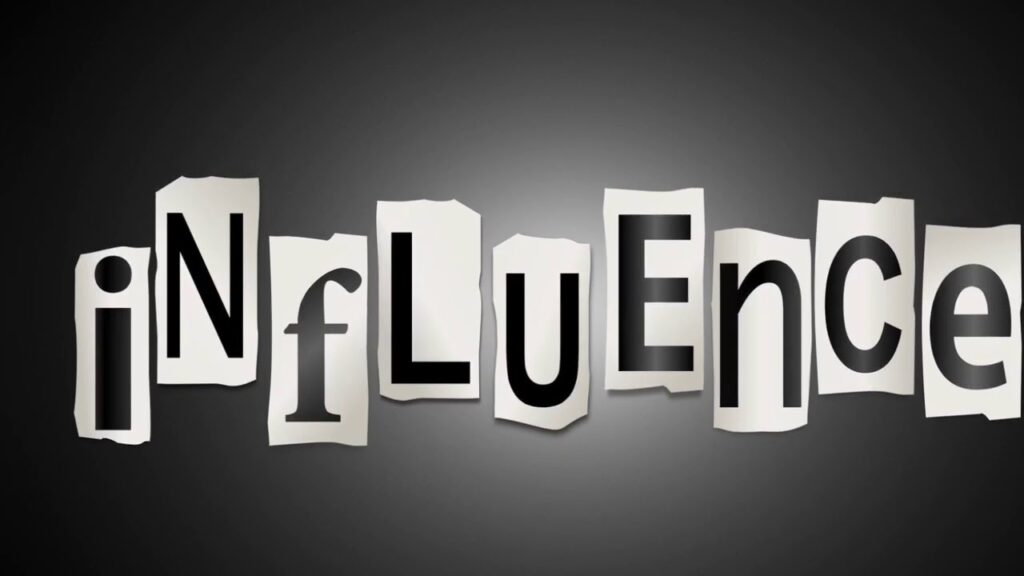Introduction: The Business Behind the Brand
Once considered a novelty, influencers now dominate the digital economy. In 2025, social media influencers, content creators, streamers, and digital entrepreneurs represent a multi-billion dollar industry. Brands invest billions in influencer partnerships, and creators are now building multi-platform businesses across YouTube, TikTok, Instagram, podcasts, and personal websites.
But behind the likes, shares, and viral videos lies a harsh reality: being an influencer is high risk. From account hacks and reputation attacks to income loss and lawsuits, influencers face unique vulnerabilities not covered by traditional insurance policies.
Enter: Influencer Insurance — a new category of protection designed to help content creators safeguard their brand, digital identity, and income streams in a world that never logs off.
This comprehensive guide explores:
- The real risks influencers face
- Types of insurance tailored to digital creators
- Case studies of influencer crises
- What coverage costs in 2025
- How to get started with influencer protection
Let’s dive into why it’s no longer optional to protect your digital empire.
Chapter 1: Why Influencers Need Insurance
1.1 Influencing is a Business, Not a Hobby
Many content creators see themselves as artists, storytellers, entertainers. While that’s true, being an influencer is also running a business — with:
- Revenue (ad money, affiliate sales, brand deals)
- Business assets (your content, channels, website)
- Legal liability (contracts, disclosures, IP rights)
- Operational risks (data loss, harassment, cyberattacks)
As with any business, insurance isn’t just a safety net — it’s a smart risk management tool.
1.2 Real Risks Influencers Face Daily
Here are just a few threats that can destroy an unprotected influencer brand:
- Account hacking or deletion (Instagram, TikTok, YouTube)
- Copyright infringement (using unlicensed music, images)
- Defamation lawsuits (negative reviews or exposed content)
- Sponsored content disputes (missing deliverables or violating contract terms)
- Loss of gear (camera, laptop, phone, editing software)
- Online harassment or doxxing (requiring security/legal aid)
- Income disruption from platform outages or demonetization
In 2025, social platforms are unpredictable ecosystems, and algorithms change faster than trends. An insurance plan helps protect creators from losing everything overnight.
Chapter 2: Types of Insurance Influencers Need in 2025
There is no single “Influencer Insurance” policy, but a bundle of coverage types tailored for content creators. Here’s what’s essential:
2.1 Content Creator Income Insurance
What it covers:
Lost revenue due to platform suspension, demonetization, cyberattacks, or brand deal cancellation outside of your control.
Why it matters:
If your YouTube channel is flagged or your TikTok account gets banned, you lose ad revenue and brand deals. This insurance replaces that lost income — similar to disability coverage for a traditional worker.

Example:
A YouTuber gets demonetized due to a copyright claim and loses $4,000/month in ad revenue. Their policy covers the income gap while the issue is resolved.
2.2 Cyber Liability Insurance
What it covers:
Data breaches, account hacks, online fraud, phishing, ransomware, and cyber extortion.
Why it matters:
A hacker accessing your account or stealing private data (such as emails, contracts, or client files) could cost you followers, reputation, and revenue.
WANT TO BE UPDATED ABOUT ENVIROTECH
Example:
An influencer’s Instagram is hacked, and explicit content is posted. Cyber insurance covers legal recovery costs, PR damage control, and platform recovery.
2.3 Professional Liability Insurance (Errors & Omissions)
What it covers:
Claims of negligence, missed brand deadlines, misleading sponsored posts, or influencer marketing violations (like FTC disclosure failures).
Why it matters:
Brands can sue creators if they believe a partnership harmed their reputation or sales. This insurance covers legal defense and settlements.
Example:
A beauty brand sues a TikTok star for misrepresenting product results in a sponsored video. Their policy covers legal fees and a settlement payout.
2.4 Intellectual Property (IP) Infringement Insurance
What it covers:
Claims related to using copyrighted music, photos, or brand names without permission in your content.
Why it matters:
Even minor background music or reposting a meme could lead to costly DMCA takedowns or lawsuits.
Example:
A lifestyle influencer uses a trending remix in a Reel and gets hit with a $10,000 copyright claim. Their insurance handles the dispute and settlement.
2.5 Equipment & Production Insurance
What it covers:
Theft, loss, or damage of production gear — cameras, drones, microphones, laptops, etc.
Why it matters:
Your gear is your livelihood. Whether you shoot from home or on the road, having replacement coverage is vital.

Example:
A travel influencer’s drone crashes in Iceland. Equipment insurance covers a $1,500 replacement so content production doesn’t stop.
2.6 Reputation Management Insurance
What it covers:
Costs of PR damage control, crisis management, and brand rehabilitation after a viral backlash, scandal, or misinformation.
Why it matters:
One canceled tweet, edited video, or false accusation can destroy a brand. This insurance helps restore your name, followers, and partnerships.
Example:
An influencer faces backlash for a controversial post taken out of context. The policy covers a PR agency, online monitoring, and temporary ad campaign losses.
Chapter 3: Real-World Influencer Insurance Scenarios
Case 1: Instagram Hack and Lost Revenue
Emma, a fashion influencer with 250K followers, had her Instagram hacked via a phishing email. The attacker locked her out for two weeks and deleted dozens of sponsored posts. She lost $3,200 in brand deal payments. Her cyber and income protection policy covered recovery and compensation.
Case 2: Lawsuit Over Undisclosed Sponsorship
Marcus, a tech YouTuber, forgot to disclose a sponsorship from a headphone company. The video went viral — and drew FTC attention. He was fined and the brand demanded a refund. His professional liability insurance covered the legal costs and settlement.
Case 3: Content Flagged for Copyright
Sofia, a fitness creator, used copyrighted music in a paid post. The original artist filed a DMCA strike and the brand canceled a future partnership. Her IP insurance handled the dispute and paid $6,000 in lost sponsorship fees.
Chapter 4: How Much Does Influencer Insurance Cost in 2025?
Costs vary based on platform, reach, income, and risk level. But here are general ballpark estimates:
| Insurance Type | Monthly Cost | Notes |
|---|---|---|
| Content Income Insurance | $20–$80 | Depends on average monthly earnings |
| Cyber Liability | $15–$40 | Covers account hacks and data breaches |
| Professional Liability | $25–$100 | Based on legal exposure and niche |
| Equipment Insurance | $10–$30 | Covers devices, cameras, editing gear |
| IP Protection | $15–$60 | Scales based on content frequency |
| Reputation Insurance | $30–$100+ | PR and crisis support coverage |
Bundled plans through creator platforms often offer 20–30% discounts.
Chapter 5: Where to Get Influencer Insurance
Recommended Providers for 2025:
| Provider | Specialization | Website |
|---|---|---|
| Kuvrr | Cyber + reputation bundles | www.kuvrr.com |
| Thimble | Short-term creator liability | www.thimble.com |
| Superscript | UK/EU digital creators | www.gosuperscript.com |
| IndyProtect | Freelancers & content creators | www.withindy.com |
| Tap Insurance | Influencer packages (Asia) | www.tap-insure.com |
| Next Insurance | US-based creators | www.nextinsurance.com |
Many of these platforms offer instant quotes, AI-generated coverage suggestions, and mobile app claim filing.
Chapter 6: 7 Tips for Choosing the Right Plan
- Audit your risks: Are you more likely to face IP claims, hacks, or brand disputes?
- Bundle smartly: Combine income, cyber, and liability under one plan.
- Consider global coverage: If you travel, make sure your policy is international.
- Look for PR/crisis add-ons: One viral misstep can ruin a career — prepare for it.
- Ensure platform flexibility: Some policies only cover YouTube or Instagram — ensure TikTok, Substack, Patreon, etc. are included.
- Review payout conditions: Especially for income insurance — what counts as a valid loss?
- Read the exclusions: Avoid surprises. For example, some plans exclude crypto-sponsored content.
Conclusion: Don’t Just Create Content — Protect It
The influencer economy has matured. So must the way creators protect themselves. If you’re earning money from your content, your digital presence is a business, and businesses require insurance.
Whether you’re a YouTube educator, an Instagram lifestyle guru, a TikTok comedian, or a podcast host, insurance can:
- Keep your income stable
- Defend your reputation
- Protect your digital identity
- Save your business in a crisis
As the creator economy continues to scale in 2025 and beyond, influencer insurance is no longer optional — it’s essential.
You’ve worked hard to build your brand. Now it’s time to insure your influence.
